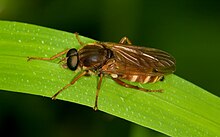
The Brachyceran infraorder Xylophagomorpha is a small group that consists solely of the family Xylophagidae, which presently contains subfamilies that were sometimes considered to be two small related families. Other obsolete names for members of this family include Exeretonevridae and Heterostomidae.
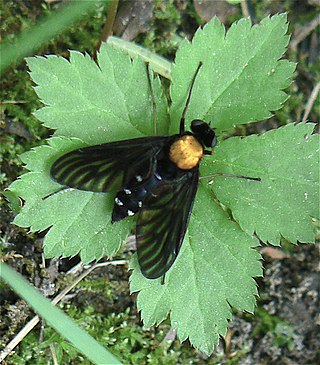
Chrysopilus is common, worldwide genus of predatory snipe flies. There are approximately 300 species in the genus, including fossil members that are sometimes found in amber.

Rhagio is a worldwide genus of predatory snipe flies. Several species in this genus are referred to as downlooker or down-looker flies because they sometimes perch on tree trunks in a head-down position. There are approximately 170 species. They can be distinguished from other rhagionids by the open anal cell on the wings and the lack of a kidney-shaped arista.
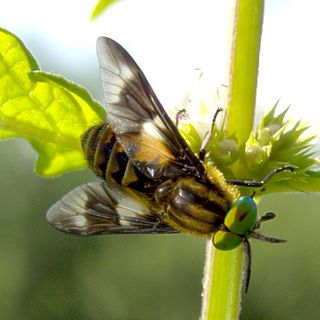
Superfamily Tabanoidea are insects in the order Diptera.
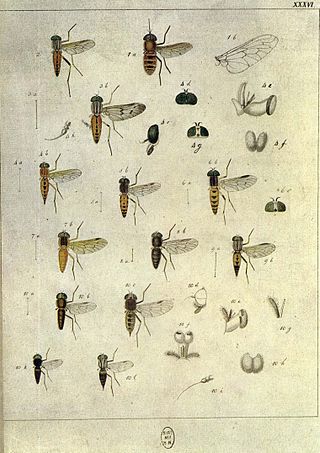
Pangonius is a genus within the horse-fly family (Tabanidae), often misspelled as Pangonia; Latreille originally published the name as Pangonius in 1802, emending it in 1804 to Pangonia, but the emendation is not valid under the International Code of Zoological Nomenclature. Some species that were earlier placed in this genus are now in the genus Philoliche.

Rutilia is a large genus of medium to large (>20mm) flies in the family Tachinidae native to Australia and the Oriental region, though notably absent from New Zealand. Like the vast majority of tachinid flies, Rutilia species are parasitoids of other insects, specifically Rutilia are known to be parasitoids of late instar larvae of scarab beetles.

Temnostoma is a genus of hoverflies. The larvae of some species feed on the wood of deciduous trees.
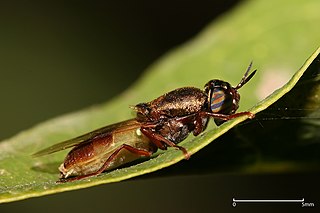
Odontomyia is a genus of soldier flies in the family Stratiomyidae.
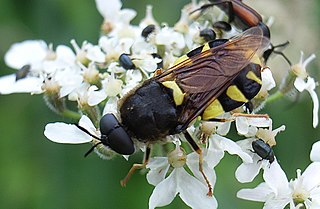
Stratiomys is a genus of flies in the family Stratiomyidae.

Oxycera is a genus of flies in the family Stratiomyidae.

Clitellaria is a genus of flies in the family Stratiomyidae.

Beridinae is a subfamily of soldier flies in the family Stratiomyidae.
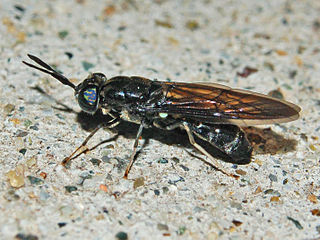
Hermetia is a genus of flies of the family Stratiomyidae.

Solva is a fly genus in the family Xylomyidae, the "wood soldier flies".

Xylomya is a fly genus in the family Xylomyidae, the "wood soldier flies".

Dialysis is a genus of flies in the family Xylophagidae.
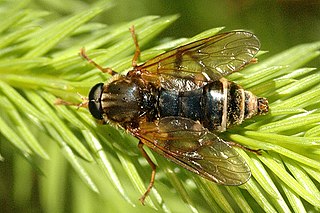
Coenomyia ferruginea is a species of fly in the family Xylophagidae.

Silvius alpinus is a species of horse fly in the family Tabanidae.
Chiromyza is a genus of flies in the family Stratiomyidae.

